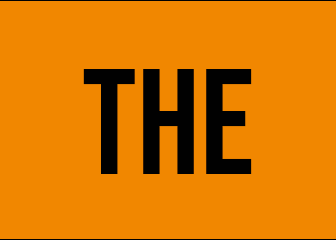Although the market continued to tick along this week, there appear to be some challenges ahead that are worrying participants.
Fallout from China’s bans and export policies continues to affect the market, whether that is concern over what will happen when the US one-month export to China ban ends, or whether that is still finding alternative markets.
Plastics exporters in particular are having to constantly sniff out the next opportunity, looking for open doors as one closes (more on this below).
For the paper market, OCC remains hot to China, and not so much elsewhere (more on this below).
Don’t forget to book your place at Secondary Commodity Markets Conference 2018. Intelligence subscribers automatically get a £75 discount – make sure you are logged in when booking your ticket. Book here
The pound fell a little against the dollar, giving exporters a bit more value with it trading at $1.34 at the end of this week, down just a touch from $1.35 at this time last week.
However, those sending material into Europe would find it a bit more expensive, with the pound rising back above €1.14 and close to €1.15 this week, after being at €1.13 on 11 May.
There will also be concerns over the rising oil price, with Brent Crude hovering at around $80 per barrel due to concern over Iranian oil supplies. At the beginning of May, oil was at around $73 per barrel. While this rise may not make too big a difference in the short term, it could lead to increased shipping and freight costs.
For plastics recyclers, a rising oil price should be a benefit if virgin polymer prices follow suit, especially when combined with what appears to be rising demand for recycled polymers in western economies.
Plastics
Prices for plastics remain relatively stable, but as mentioned above, the market will be watching closely to see if there is any impact from rising oil prices.
While material keeps moving at present, aided by the high PRN value, there is a constant game of finding a destination for material.
Some shipping lines are requesting deposits for containers to destinations such as Malaysia or Vietnam, while others are not refusing to ship plastics there at present. This is because the ports are overwhelmed by stockpiles of plastics in containers at the dockside awaiting collection with infrastructure to collect and process these materials overstretched.
The shipping lines therefore are fearful they could be left with full containers at dockside if the buyers of these materials decide not to collect. Or they are fearful that containers will be left there for a long time and out of action until the infrastructure us available to collect them.
There is also a feeling that some of the Asian destinations and the usually more prominent European destinations such as Poland and Netherlands are now less enthused about buying material, and as a result the focus appears to be on Lithuania and Turkey at the moment.
Paper
OCC continues to be the main point of conversation in the market at the moment.
As suggested last week, attention from Chinese mills turned to the UK and Europe for OCC purchases following the one-month ban imposed on US exports to China. This helped to push the price of Chinese specification material up above £150 per tonne in some circumstances, although trading was also occurring at £140+.
There is talk that shipments are already being prepared in the US for China once the ban ends, and there is likely to be a flood of material at the beginning of June.
For the non-China market including UK, Europe, India and elsewhere, anywhere between £70 to £80 wasn’t unusual.
There is a view though that June may see more convergence in price, as demand seems likely to return in non-Chinese destinations, while Chinese demand should fall.
Other paper grades were stable in price this week.
Metals
Copper grades continued to improve, rising by £100 per tonne for the second week in a row.
Brass grades also rose by the same amount. Other grades saw no real change.
Prices
If you wish to see a longer data set on each table or chart, change the ‘show 10 entries’ drop down to your preferred choice. Both the table and chart (if there is one) will adjust automatically. Our full data set is available here to subscribers.
[wpdatatable id=60]
[wpdatachart id=26]
[wpdatatable id=61]
[wpdatatable id=62]
[wpdatachart id=27]
[wpdatatable id=63]
[wpdatatable id=64]
[wpdatachart id=28]
[wpdatatable id=65]
[wpdatatable id=66]
[wpdatatable id=67]
[wpdatachart id=29]
[wpdatatable id=68]
[wpdatachart id=30]
[wpdatatable id=69]
[wpdatatable id=70]
[wpdatachart id=31]
[wpdatatable id=71]
[wpdatatable id=72]
[wpdatachart id=32]
[wpdatatable id=73]
[wpdatatable id=74]
[wpdatatable id=75]
[wpdatatable id=76]
[wpdatatable id=77]
[wpdatatable id=78]
[wpdatatable id=57]
[wpdatachart id=23]
[wpdatatable id=58]
[wpdatachart id=24]
[wpdatatable id=59]
[wpdatachart id=25]
[wpdatatable id=79]
[wpdatatable id=80]
[wpdatatable id=81]




